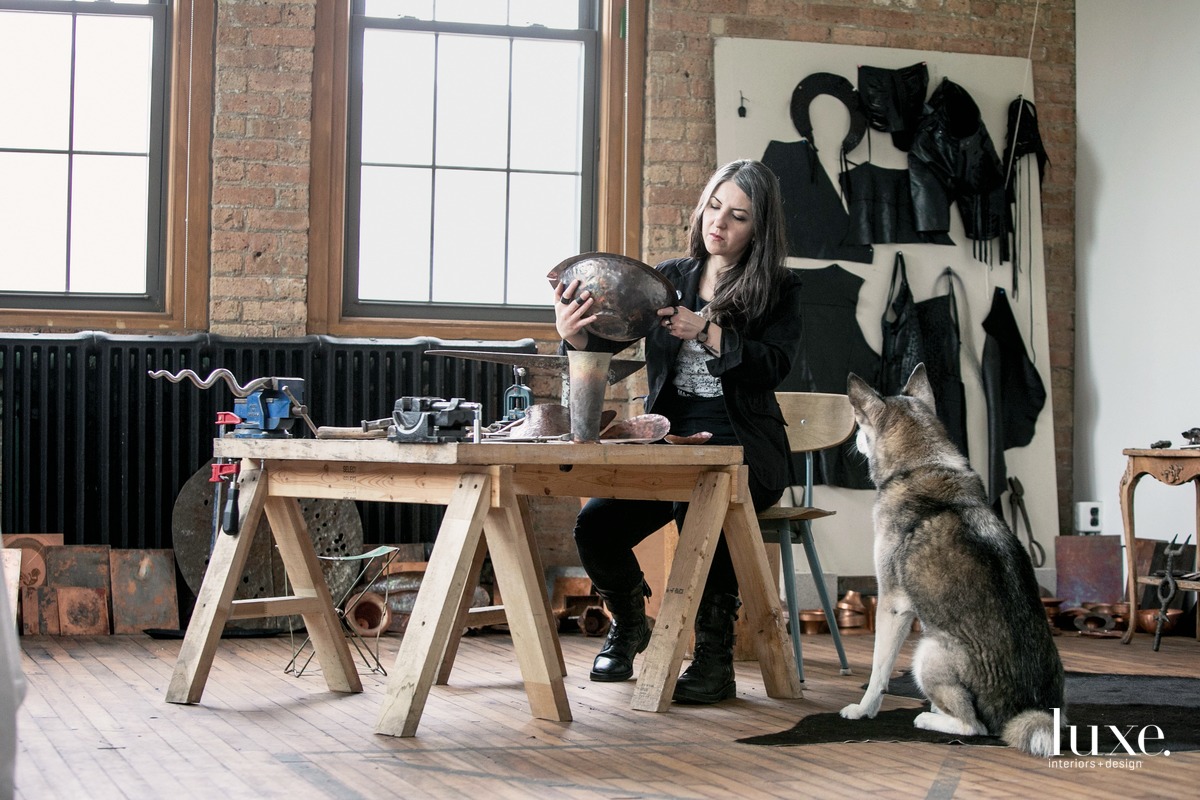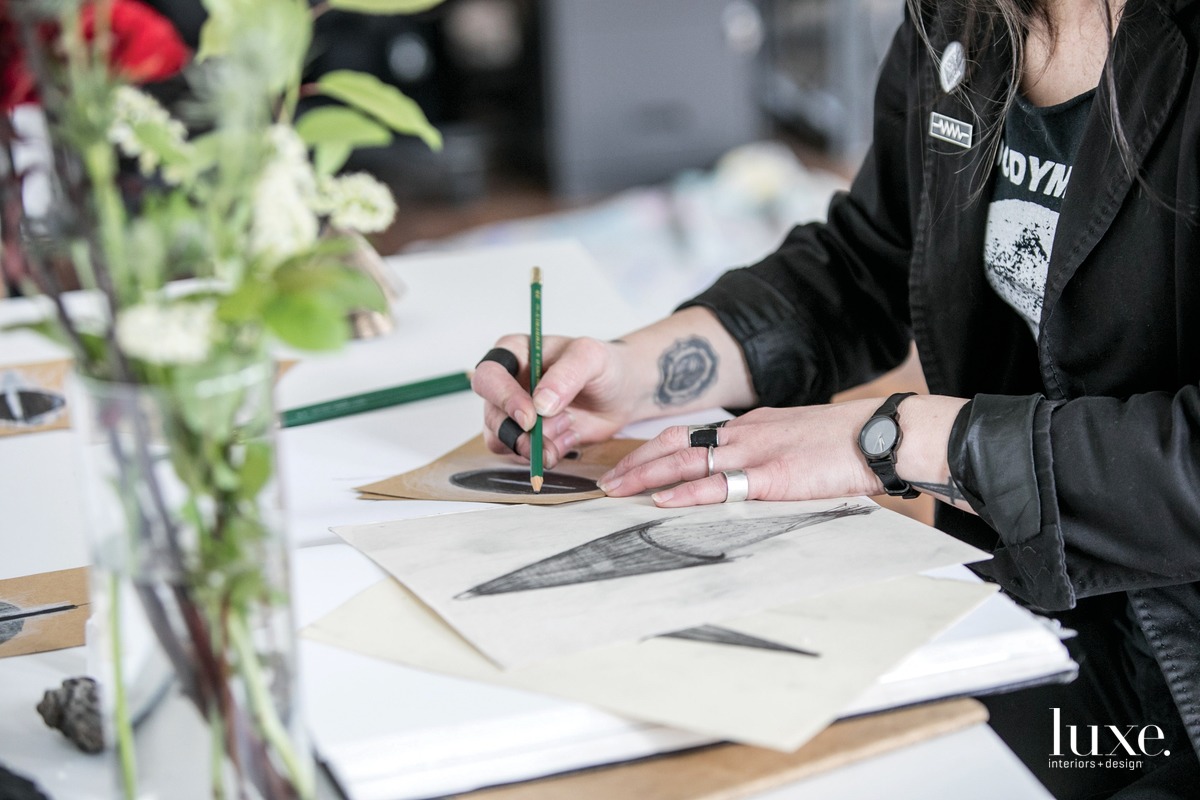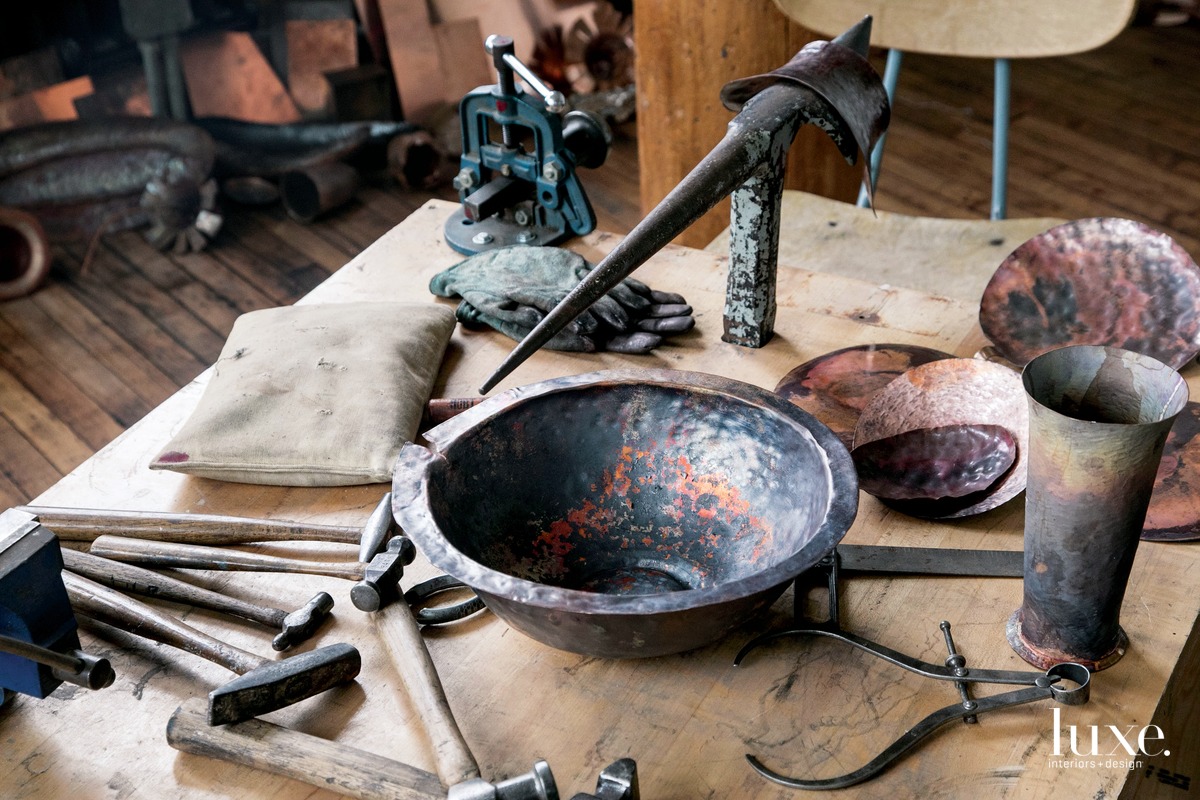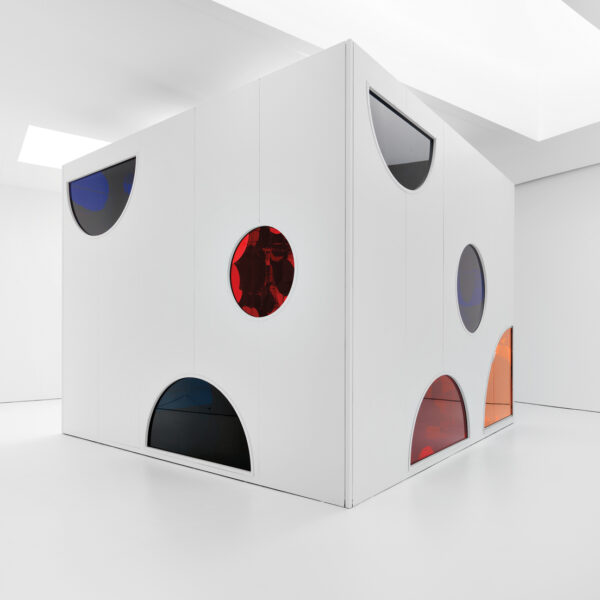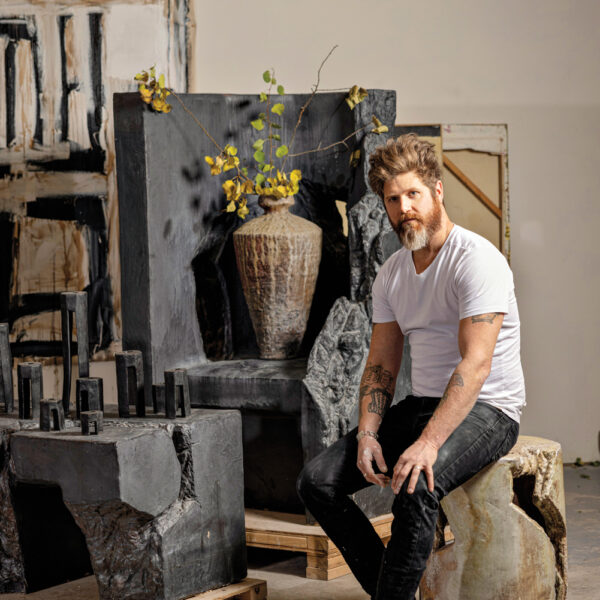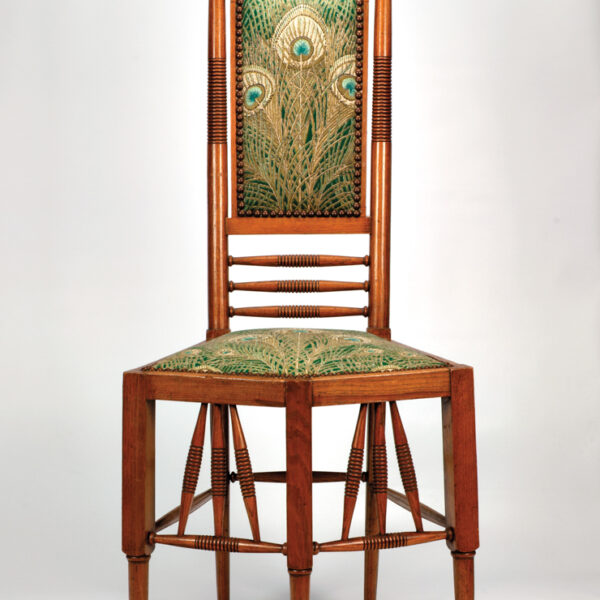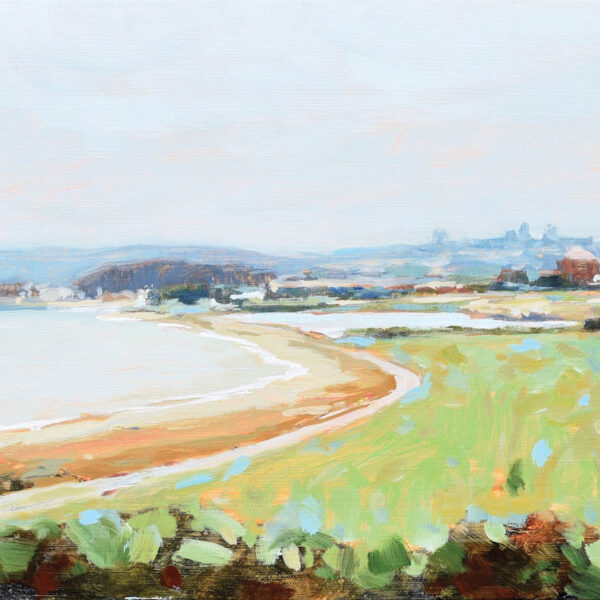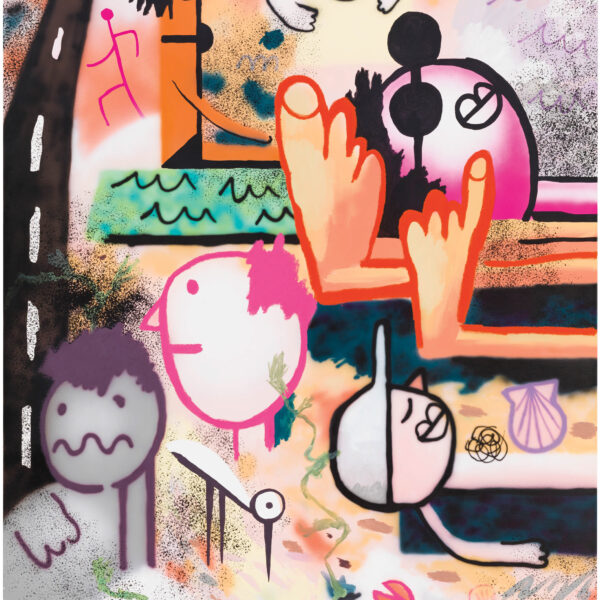
Prieto-Velasco sits with her Siberian Husky, Quinn, in her studio, which is filled with various hammers and bowls.
When Chicago artist Laura Prieto-Velasco first started hammering bowls, it was not with the intent to create a homeware line for her jewelry and fashion company, Hvnter Gvtherer. Rather, it was a meditative process she used as a way to work through her thoughts. “Then I had an idea for a collection of bowls,” she recalls. “I started to really look at what hammering meant to me. It was a way to ll a void and answer some existentialist questions I was having.”
The evolution of Prieto-Velasco’s work is representative of her personal and artistic journey. The artist originally attended Temple University’s Tyler School of Art in Philadelphia to pursue a degree in graphic design. But while studying abroad in Italy, she fell in love with metal sculpture and upon her return switched her studies to metals, jewelry and CAD CAM. She went on to earn her master’s in applied design at San Diego State University, where she discovered her passion for hammering. “My professor at the time, Helen Shirk, was the metalsmith diva,” Prieto-Velasco says. “She focused primarily on copper, making large bowls, and she made it look so easy. I fell in love with that magic.”
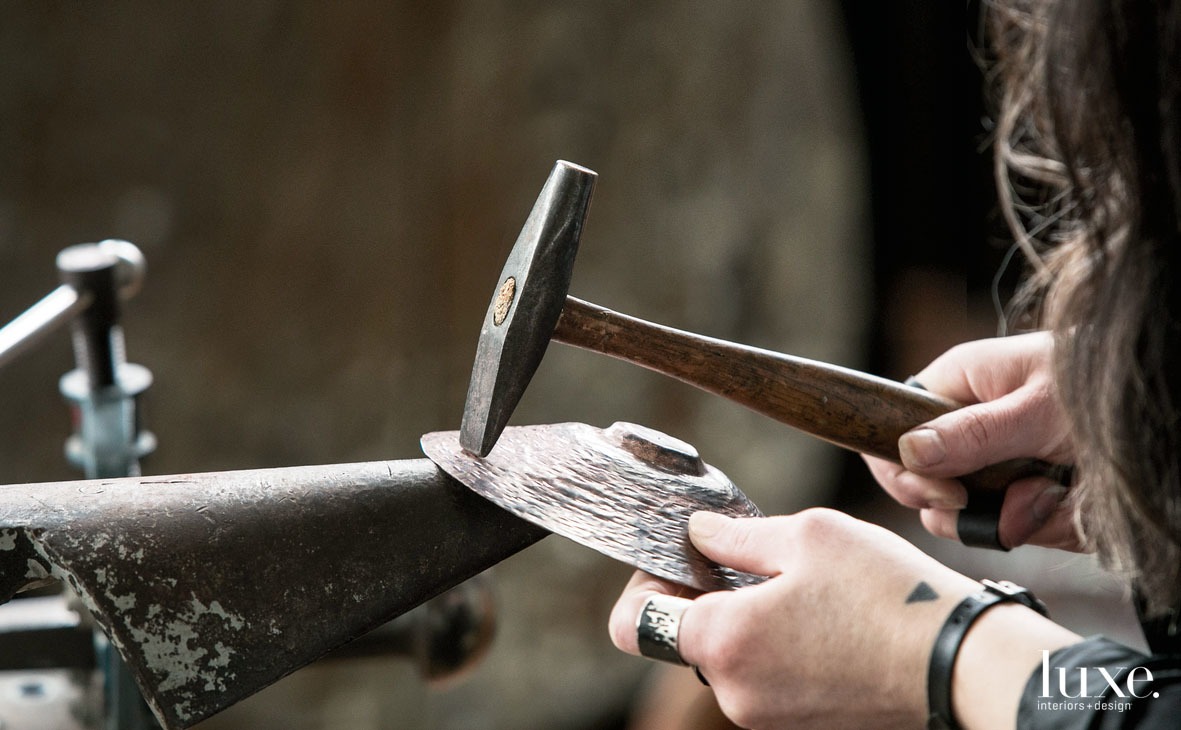
Chicago artist Laura Prieto-Velasco hand-hammers each of her bowls.

Chicago artist Laura Prieto-Velasco hand-hammers each of her bowls.
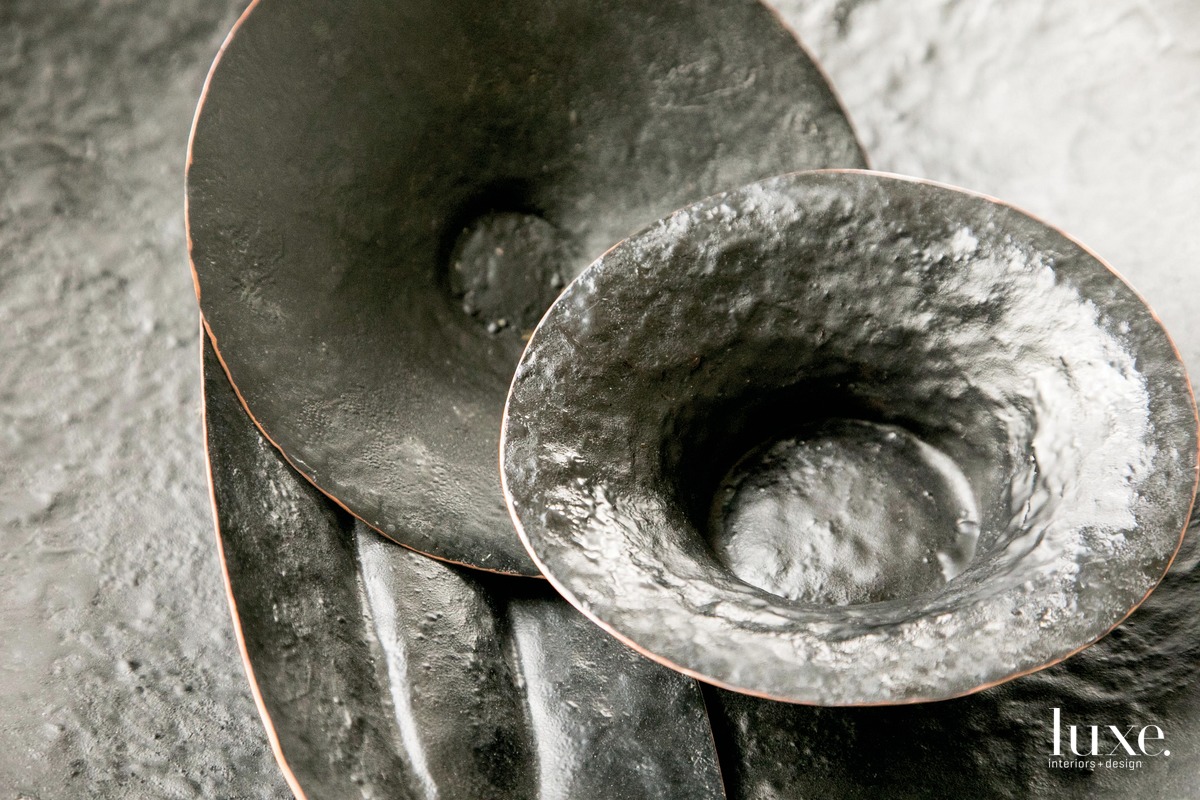
The pieces in her 2017 copper Poros series are coated in a deep-black high-heat enamel finish.

The pieces in her 2017 copper Poros series are coated in a deep-black high-heat enamel finish.
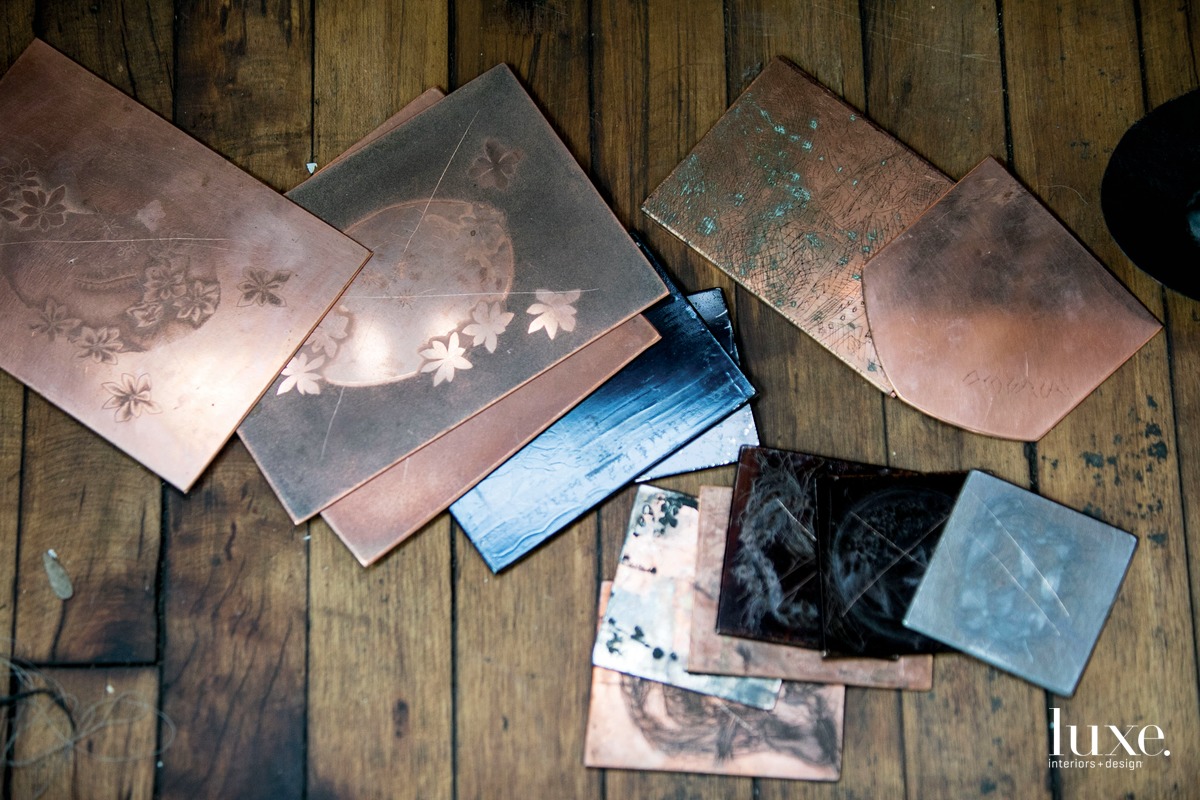
For an upcoming series, the artist will strip the coatings off copper etching plates by local printmaking artist Raeleen Kao and recycle them into sculptural copper forms

For an upcoming series, the artist will strip the coatings off copper etching plates by local printmaking artist Raeleen Kao and recycle them into sculptural copper forms
Guided by an ethos of sustainability–“The notion of resourcefulness is important to me,” she says–Prieto-Velasco uses byproducts of the construction industry to create her pieces, working with gutter and roofing companies and other artisans who allow her to dig through their scrap bins to procure discarded copper. The scrap metal dictates the size of the final piece, which is guided by a multitude of influences– including, unexpectedly, Flamenco dancing.
“The rhythmic aspects of the dance and the heel work is really connected to hammering,” explains Prieto-Velasco, who has Puerto Rican and Spanish ancestry. The artist has been fascinated by the dance style since she was a child, and she began taking classes when she moved to Chicago in 2009 after graduate school. “I am heavily drawn to the history of the Romani people and early flamenco style because of its complex origins and nomadic culture,” she explains.
The mysterious, ritualistic dance informs Prieto-Velasco’s artistry not only through rhythm and tempo but also in its exploration of cultural issues. The 2016 presidential race inspired her first collection of bowls, called Bronze Age. “A lot of the ideas behind that were sourced in looking at what’s happening in contemporary life and trying to find answers in how people dealt with similar things in the ancient world,” she says.
Prieto-Velasco’s newest collection, Iron Age, has a more personal focus. “I’ve had my head in Iron Age for the past two years or so,” she says. “As a woman in my late 30s struggling with infertility and the pressures associated with this, I used the bowls to meditate upon this concept of an empty womb.”
Female fortitude is a common thread in Prieto-Velasco’s work, which is available at Pavilion Antiques + 20th C, Holly Hunt and Detroit’s Orleans + Winder. The work of women metalworkers leans toward the tactile and intuitive, says Prieto-Velasco, who is influenced greatly by female artists. “People have this notion that most metalworkers are big, burly men,” she says. “But when it comes down to it, you have to have a sensitive sensibility and delicacy about the way you work with metal. It’s a precise but also fluid and sensual medium.”

